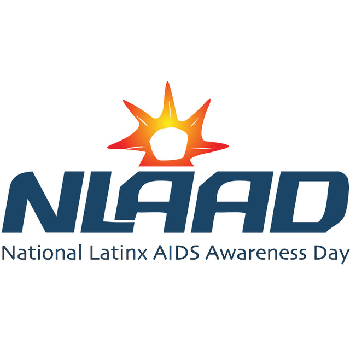National Latinx AIDS Awareness Day
Should I get tested for HIV? Yes
National Latinx AIDS Awareness Day (NLAAD) raises awareness of the disproportionate impact of HIV on Hispanic and Latino communities in the United States. First recognized in 2003 by the Latino Commission on AIDS (LCOA) and the Hispanic Federation, NLAAD is observed annually on October 15 to coincide with the last day of Hispanic Heritage Month. The 2025 NLAAD theme is “Should I get tested for HIV? Yes,” encouraging people with HIV to access treatment so they can stay healthy and achieve an undetectable viral load to prevent HIV transmission, a concept known as Undetectable = Untransmissible, or U=U.
Hispanic and Latino communities across the United States are diverse, representing a variety of education levels, incomes, languages, and cultures. In 2022, Hispanic and Latino individuals accounted for 32 percent of new HIV diagnoses in the United States, although they represented 19 percent of the total U.S. population, according to the Centers for Disease Control and Prevention (CDC). In particular, those who are recent immigrants, have completed less formal education, or have limited English proficiency are disproportionately affected by HIV and may be at a disadvantage when accessing HIV testing, prevention, and treatment services.
Reducing HIV-related disparities in Hispanic and Latino communities requires improved access to HIV testing, prevention, and treatment services. HIV testing is critical for prevention efforts, so people who have HIV can access treatment and prevent further HIV transmission. The National Institutes of Health (NIH) HIV research program supports research to better understand and reduce HIV-related health disparities based on race and ethnicity. NIH-supported research also aims to increase access to HIV testing, prevention, and treatment services and encourage treatment adherence.
Social Media
Use the hashtag #NLAAD to follow the conversation about this awareness day on social media. Download graphics and find sample social media posts in English and Spanish to help promote HIV prevention, testing, and treatment in Hispanic and Latino communities on the LCOA NLAAD webpage.

Additional Resources
NIH OAR Resources
- The FY 2021–2025 NIH Strategic Plan for HIV and HIV-Related Research provides a roadmap for NIH to guide HIV and HIV-related research and direct HIV research funding to the highest-priority areas to help end HIV. The plan includes efforts to develop HIV prevention and treatment strategies that are tailored for different populations, such as Hispanic and Latino communities.
- FY 2026 NIH HIV/AIDS Professional Judgment Budget
The NIH HIV/AIDS Professional Judgment Budget mentions the need for research to address stigma and barriers to accessing HIV prevention and treatment services that contribute to continuing high HIV prevalence among Hispanic and Latino populations. - HIVinfo.NIH.gov, maintained by OAR, provides HIV-related infographics, fact sheets, and links to additional resources:
- The Hispanic/Latinos HIV Source collection provides links to federal and nonfederal resources on HIV prevention and treatment in the Hispanic and Latino population.
- The Basics of HIV Prevention fact sheet explains how HIV is transmitted and how to prevent HIV transmission.
- The Pre-Exposure Prophylaxis (PrEP) fact sheet explains how PrEP works to prevent HIV and when someone might want to consider PrEP.
- The PrEP vs. PEP infographic explains the difference between these two HIV prevention methods.
Centers for Disease Control and Prevention (CDC)
- CDC’s Let’s Stop HIV Together campaign empowers communities, partners, and health providers to reduce HIV-related stigma and promote HIV testing, prevention, and treatment.
